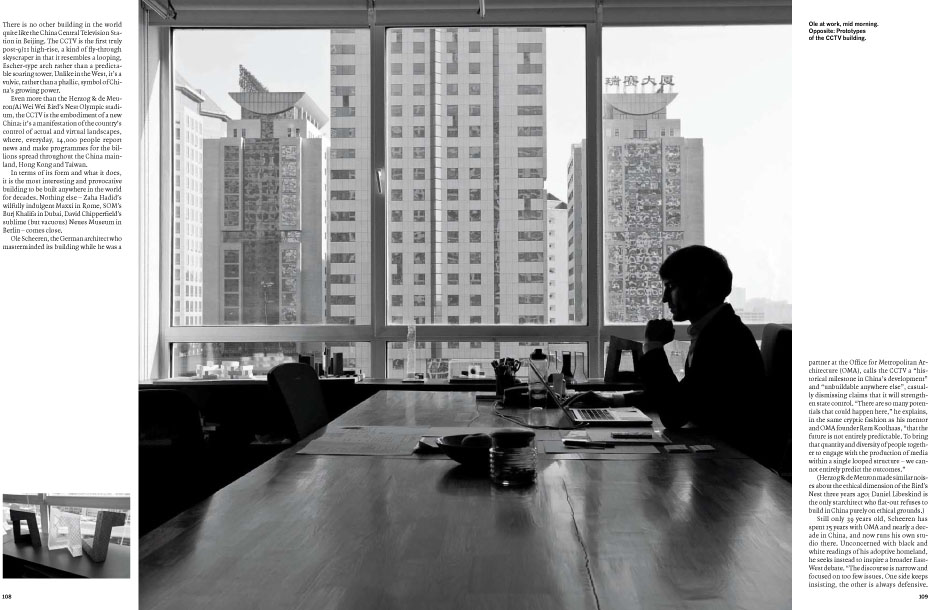Nov 11, 2012 | Architecture, Development, Urban
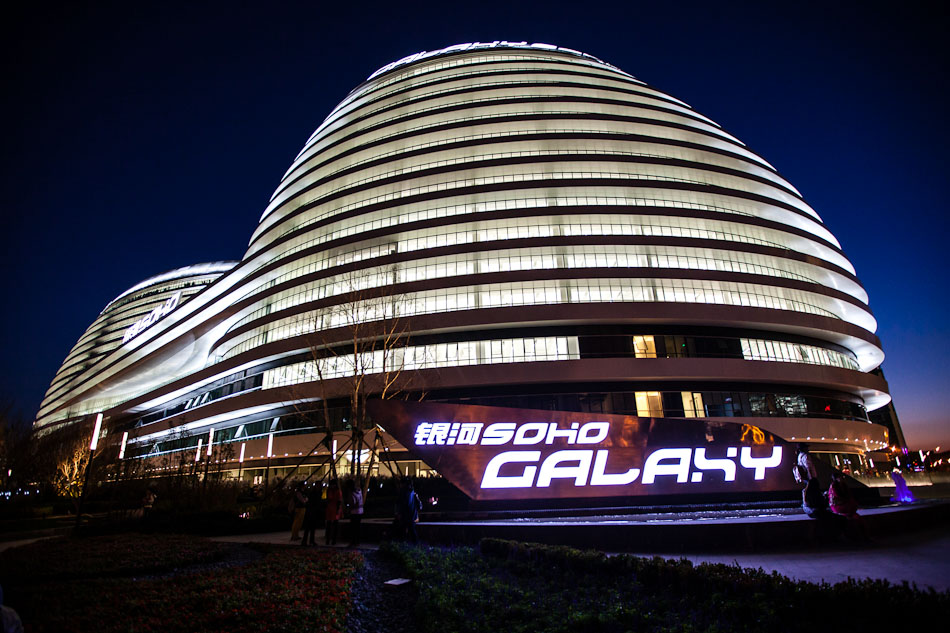
The recently unveiled Galaxy SOHO literally resembles an array of astral objects with its spherical shapes and blazing lights. It now looms above Beijing’s second ring road. It is supposed to represent a big step forward in architecture and its capability to inspire. Zaha Hadid, the chief architect, made an appearance at the launch with a long talk about the space and the possibilities it represents. A strong sense of hope for the future of Chinese design and fashion filled the air. Translating this into viable products and businesses is the real difficulty, though. Galaxy SOHO is certainly an inspiring place for such imaginative pursuits with its elegant curves and charged globular structures. There are excellent lines of site throughout the complex. But are there enough clientele to actually fill it up and create an active and engaging community? Galaxy SOHO is huge: 330,000 square meters of office and retail space. Plus it sits atop one of the most trafficked intersections in Beijing. Right now Sanlitun SOHO is barely filled, let alone Galaxy SOHO which sees less pedestrian traffic and intense gridlock. I will keep tabs on the complex in the coming months. Hopefully it does not turn into a huge empty space like the many others popping up around the city.
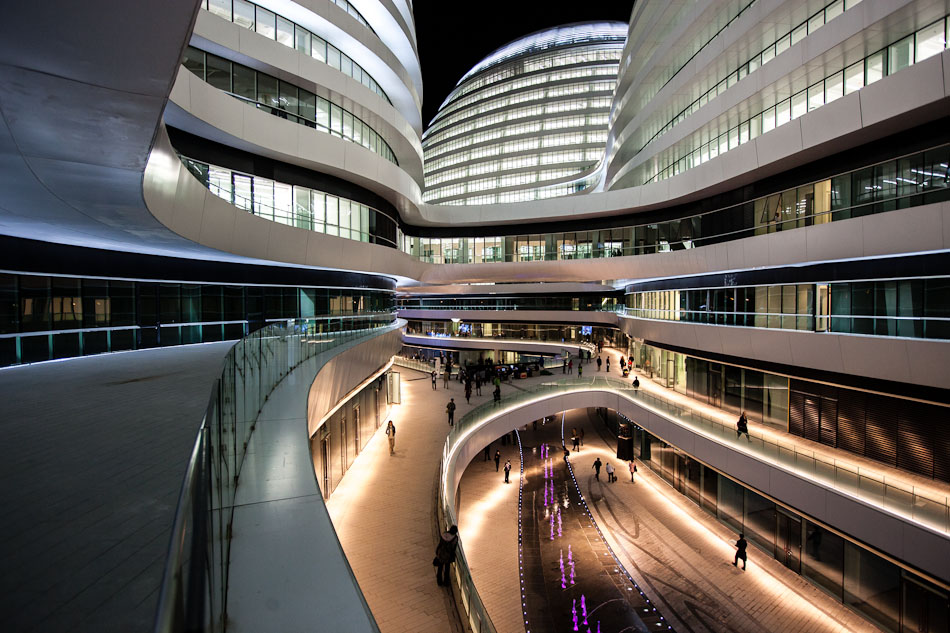
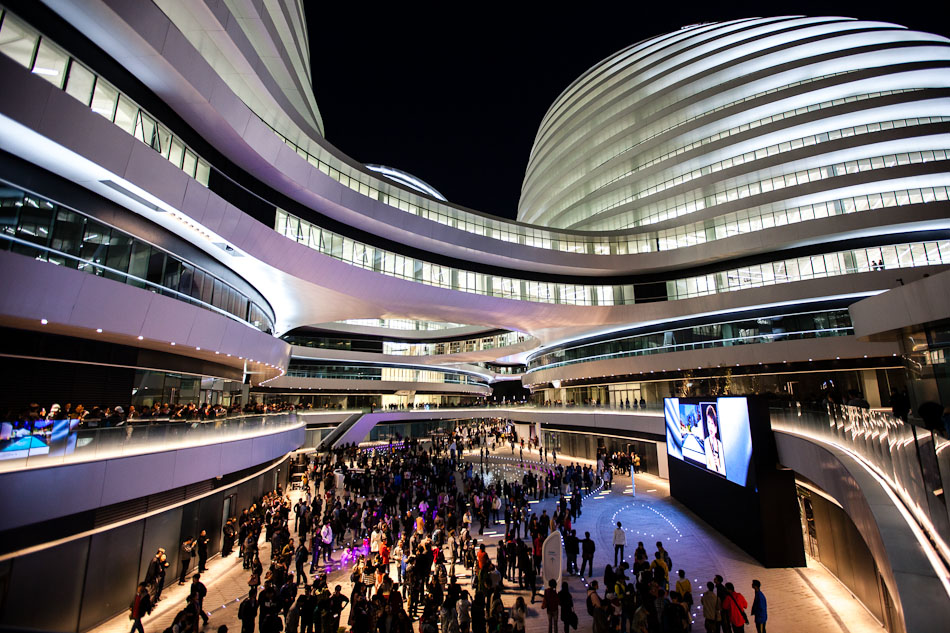
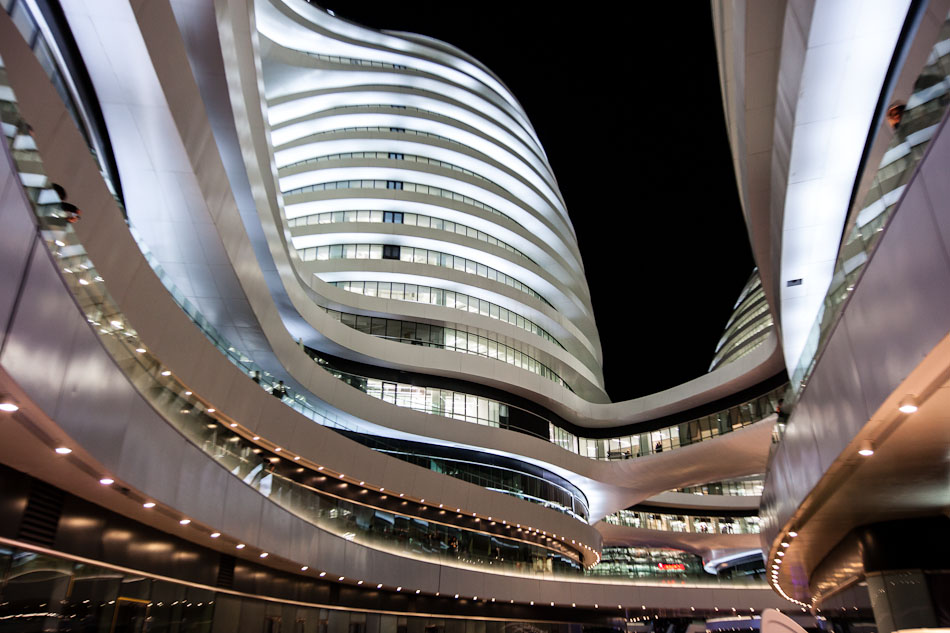
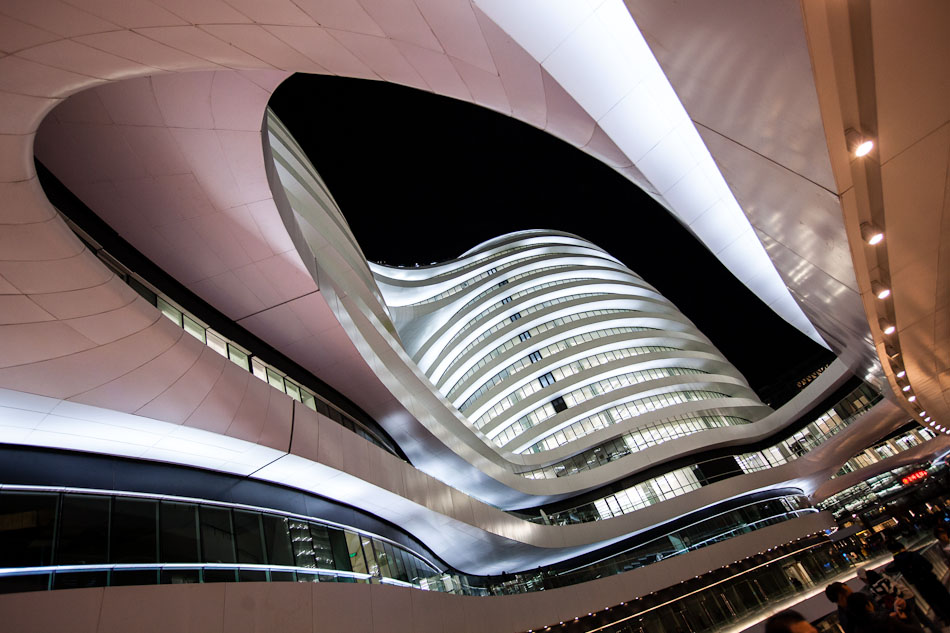
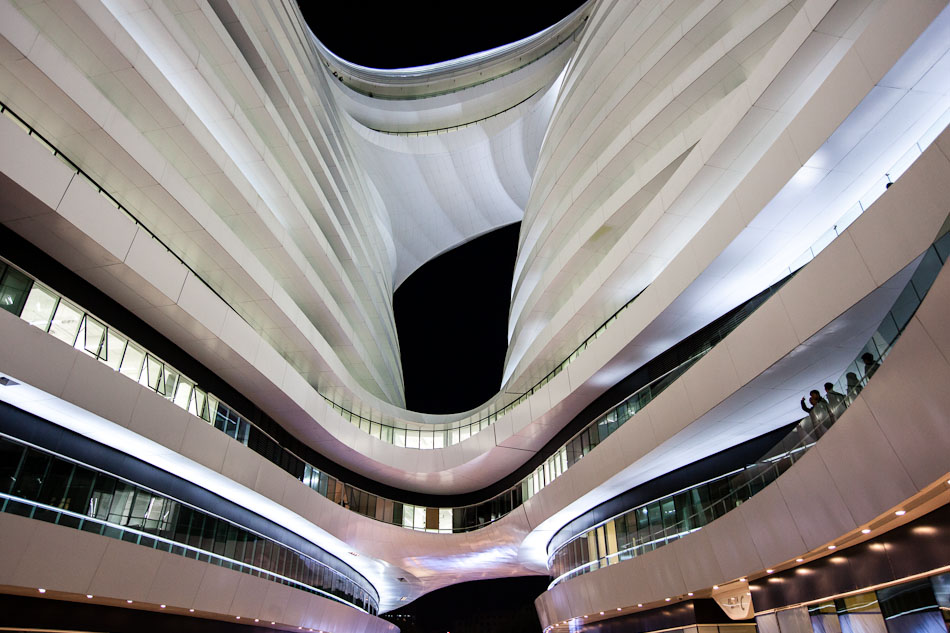
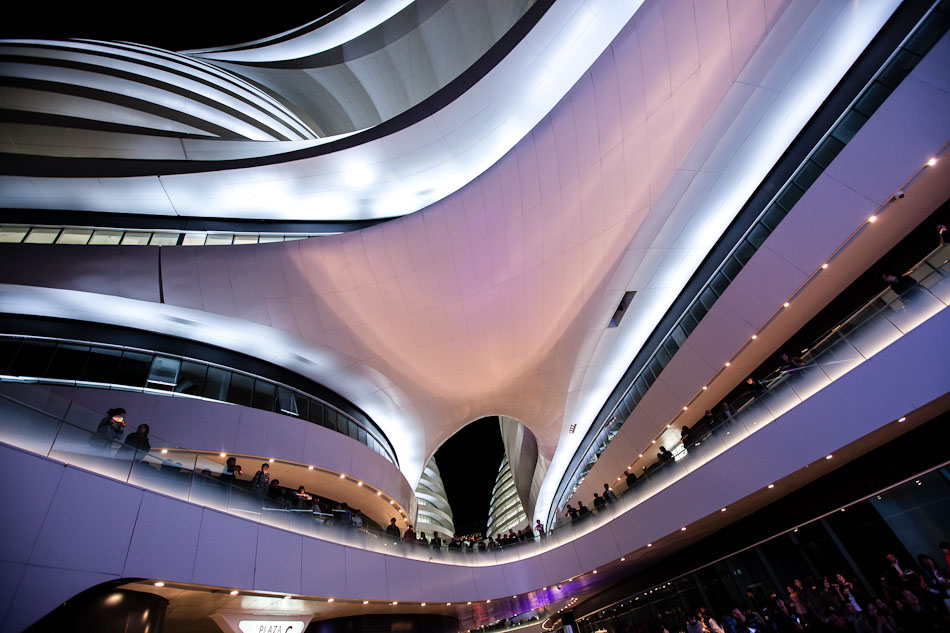
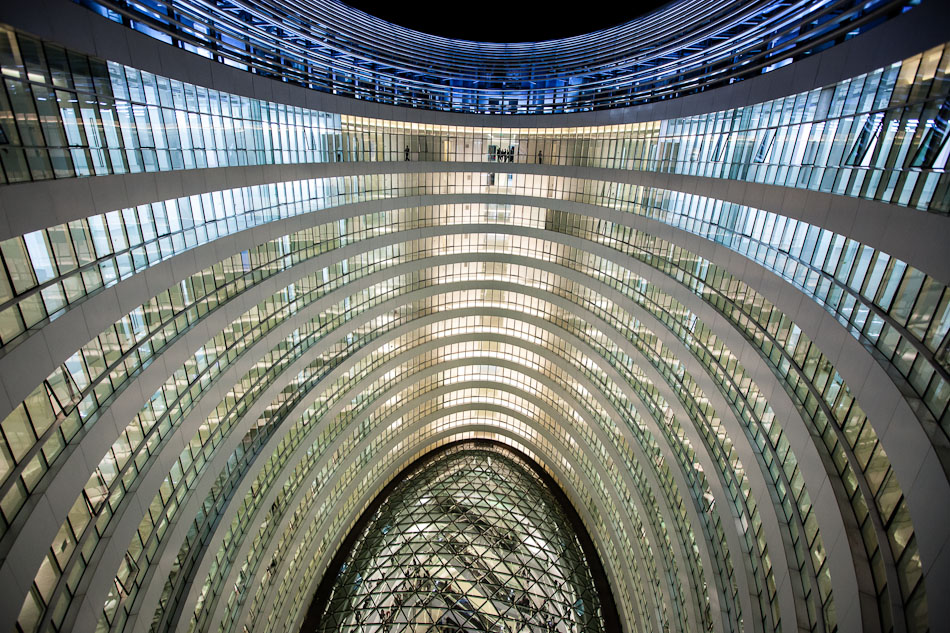
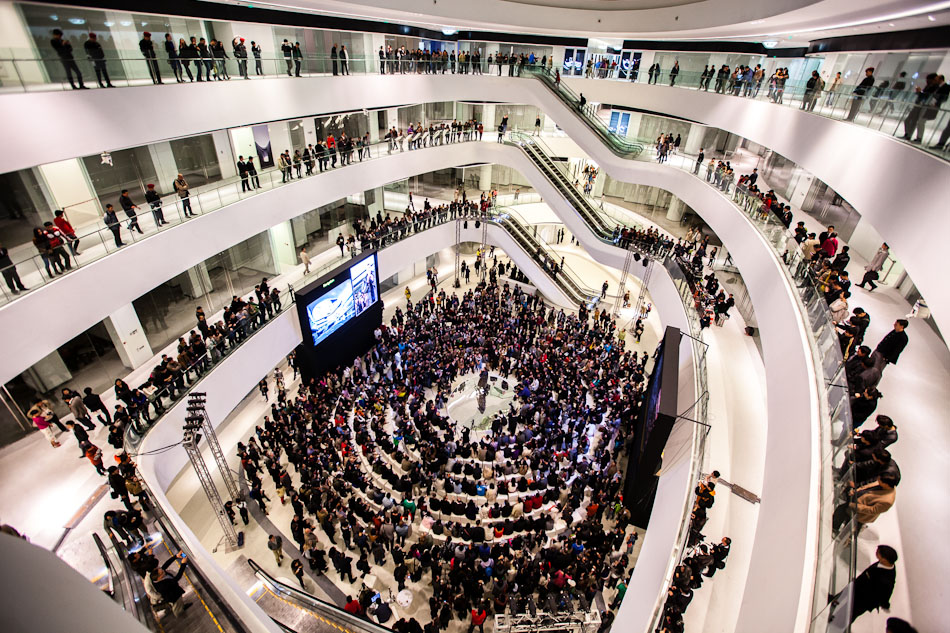
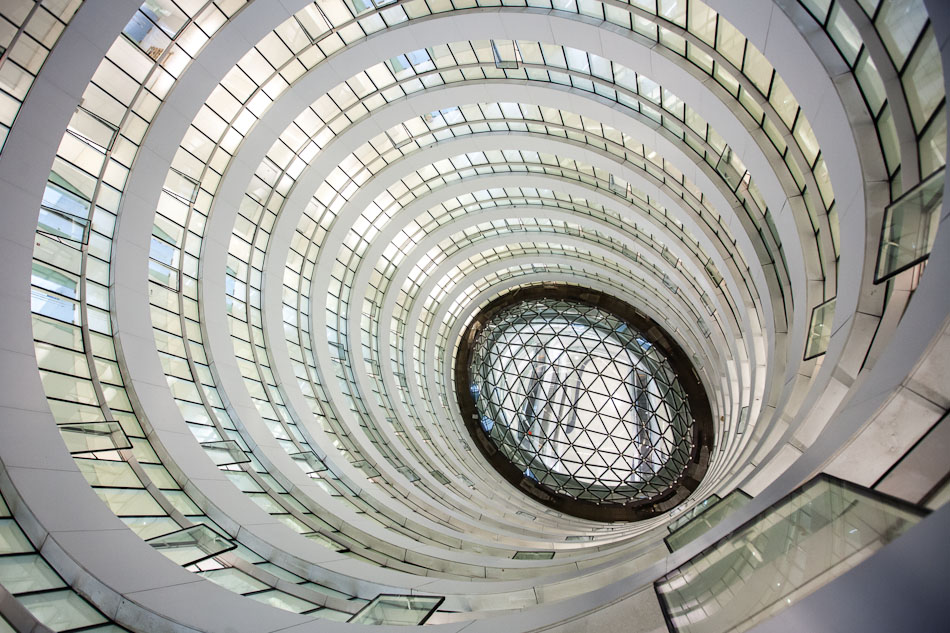
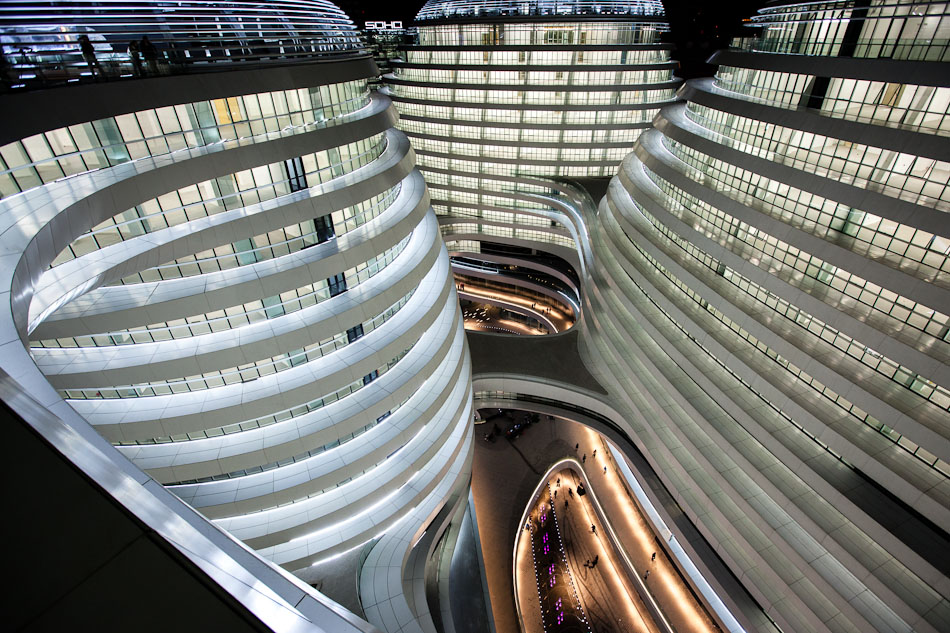
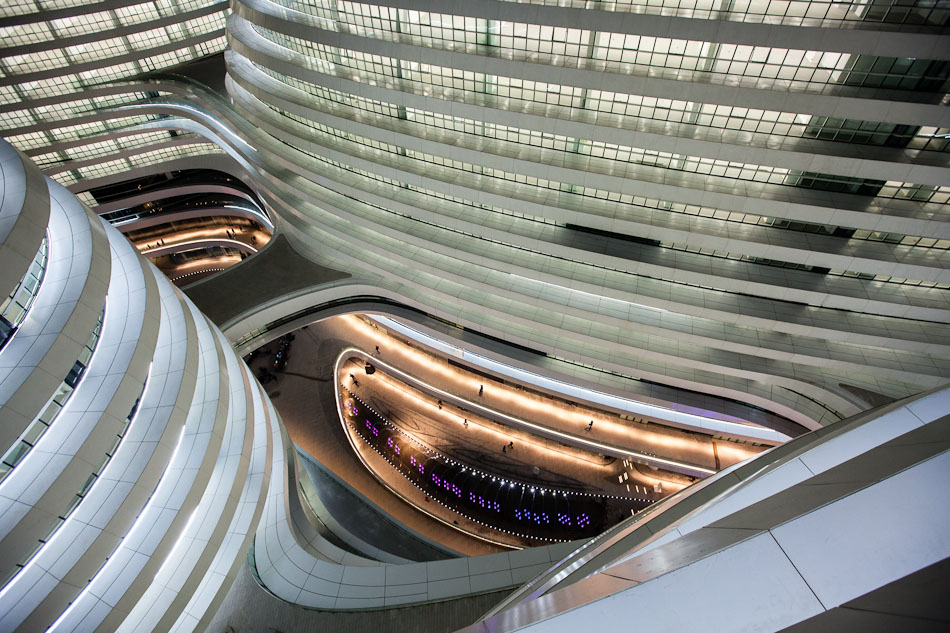
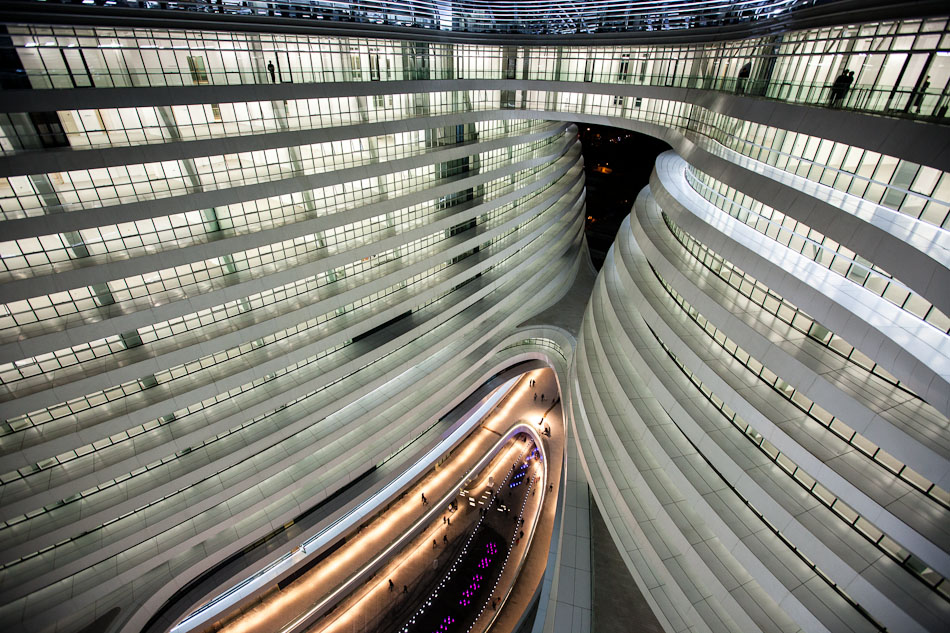
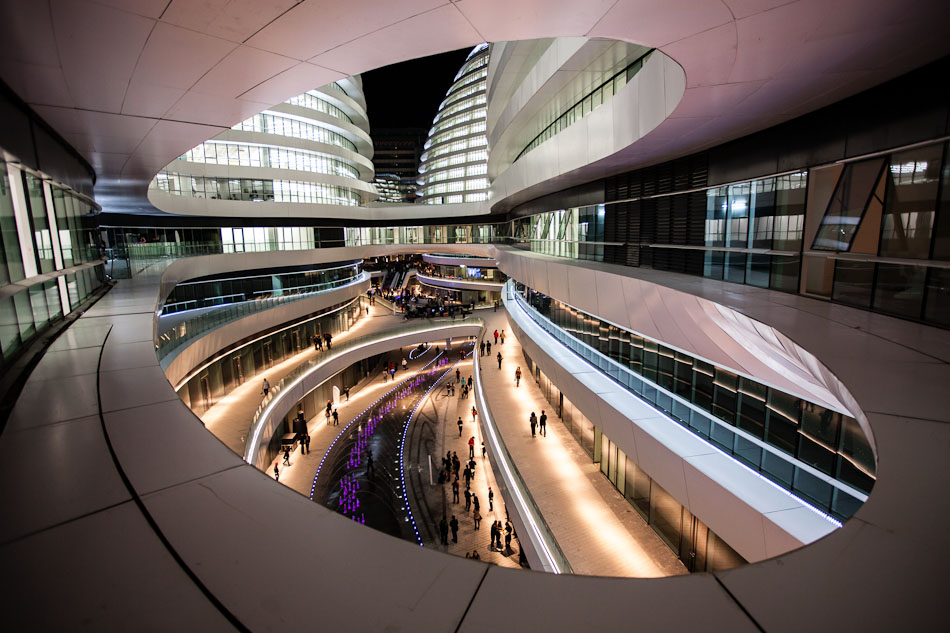
Oct 25, 2012 | Architecture, Clippings, Counterfeit Paradises, Development
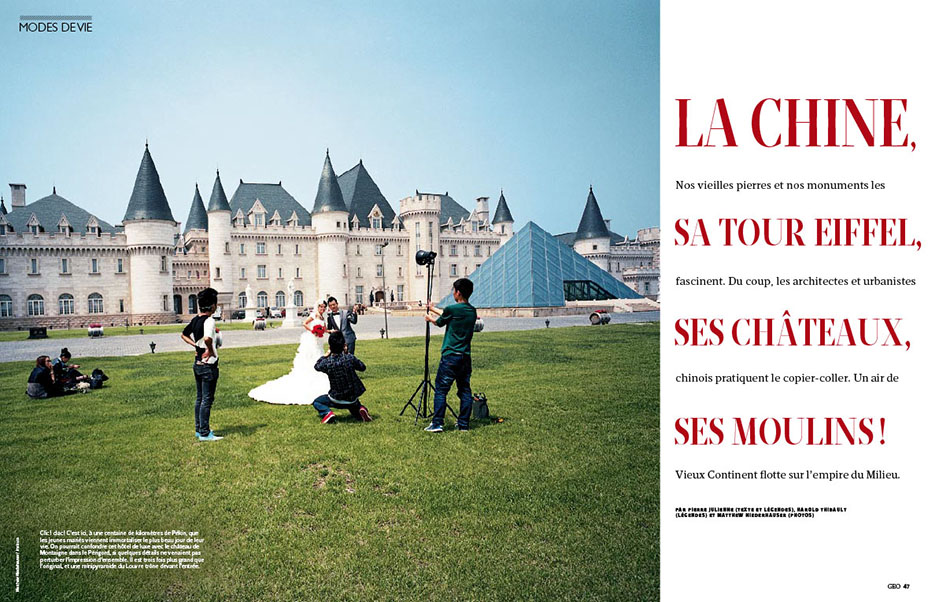
My Counterfeit Paradises series made made a strong appearance in GEO France this summer. Fourteen pages of shanzhai awesomeness. The magazine commissioned me to shoot all of my favorite ersatz European developments around China. This is only part of the Counterfeit Paradises oeuvre as China’s grand development strategies continue to spread at an unrelenting pace. The series explores the cracks in “harmonious” cities coming into being throughout China, as well as sites of leisure and luxury now enjoyed by the urban elite. This nouveau riche partake in an imagined space of contentment and growth even as a gap widens between the promising rhetoric espoused by municipal governments regarding urban planning and actual implementation. This fantastical future plays out in many spaces including newfangled urban districts, cultural institutions, amusement parks, and themed residential developments. In practice, many remain underused, fanciful but alien terrains. Most of the hopes and dreams woven into this urban fabric remain false in nature. These are only a smattering of the many Counterfeit Paradises in China.

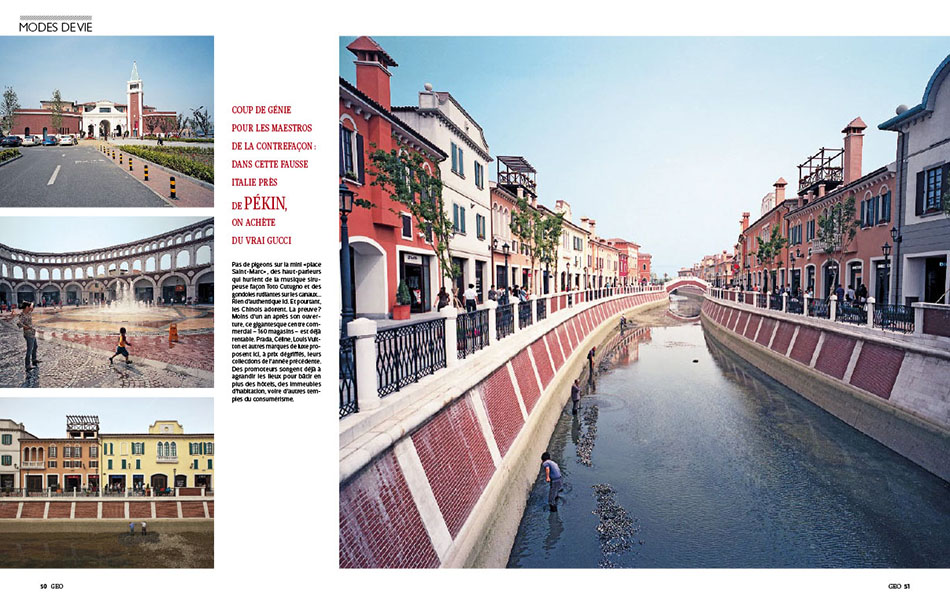
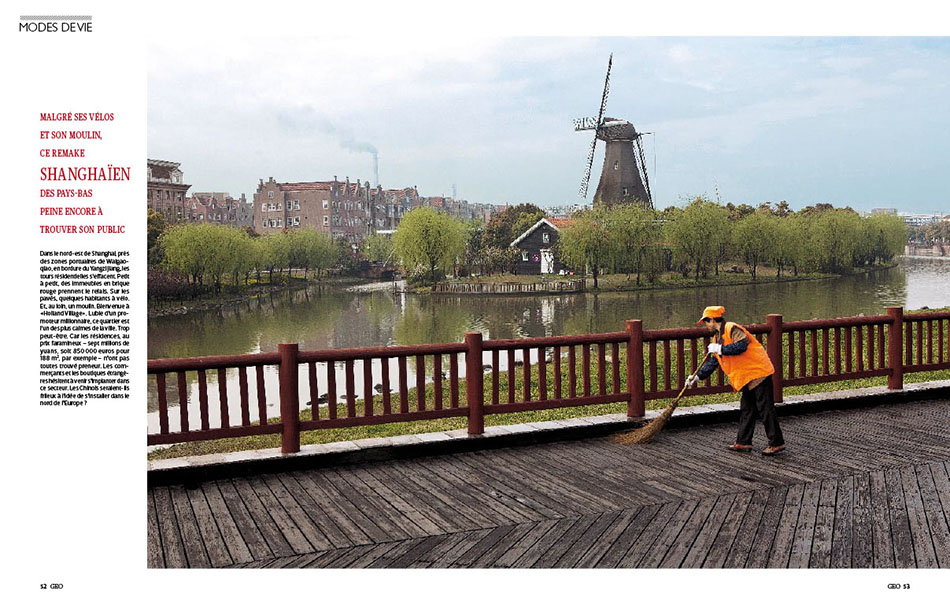
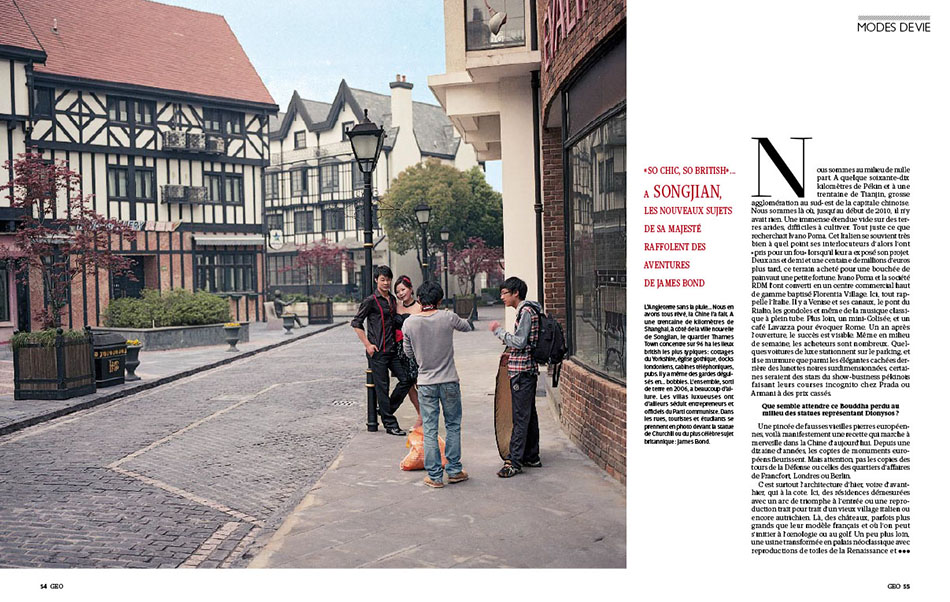

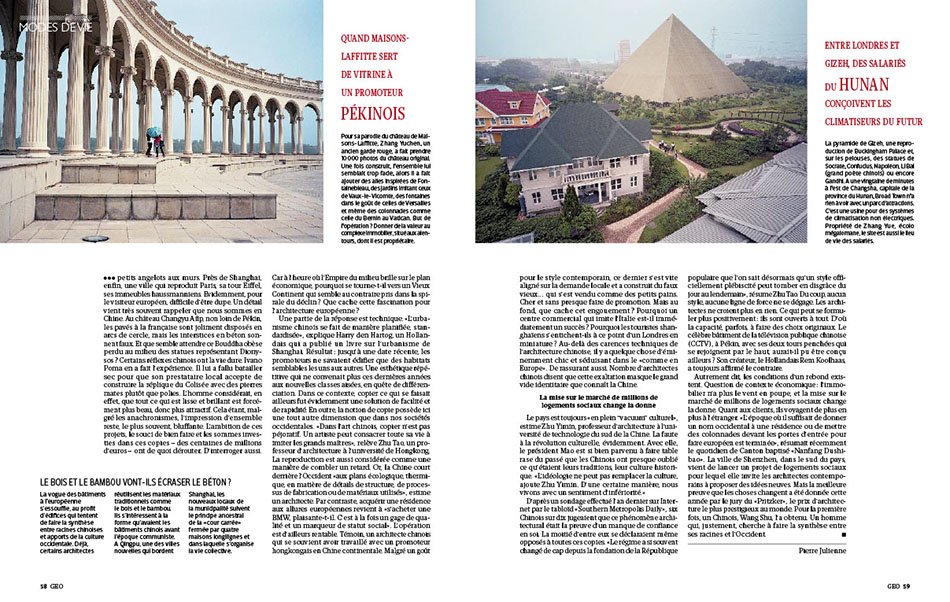
May 23, 2012 | Architecture, Clippings, Development, Portraits, Urban
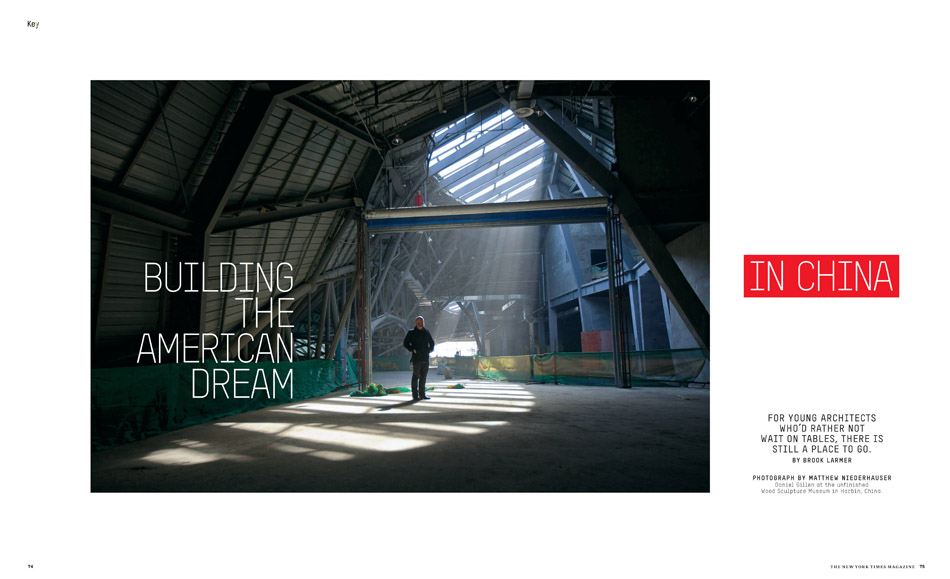
I finally got an opportunity to shoot for The New York Times Magazine. They sent me to Harbin with Daniel Gillen, a young American architect who transplanted to Beijing to ride the wave of audacious infrastructure projects being built across China. He currently works for MAD, founded by Ma Yansong and one of the leading domestic firms in China. Over the past few years MAD was tapped to build a number of cultural centers and museums in their consistently curvilinear style, including the recently completed Ordos Museum and the China Wood Sculpture Museum that I photographed in Harbin. Unfortunately these grand architectural flourishes are usually just showpieces in much larger megablock developments – a small nod to innovation amongst a greater sea of mundane urbanity. Whether or not they actually see any use is still in question. In an ideal world they will become centers of creativity, but in the meantime, Daniel Gillen is only there to build them.
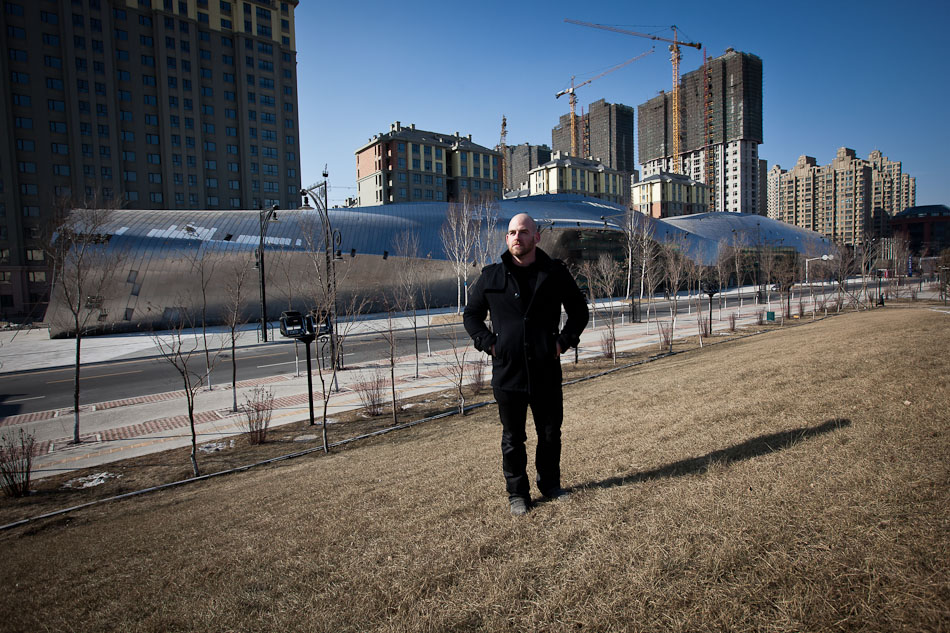

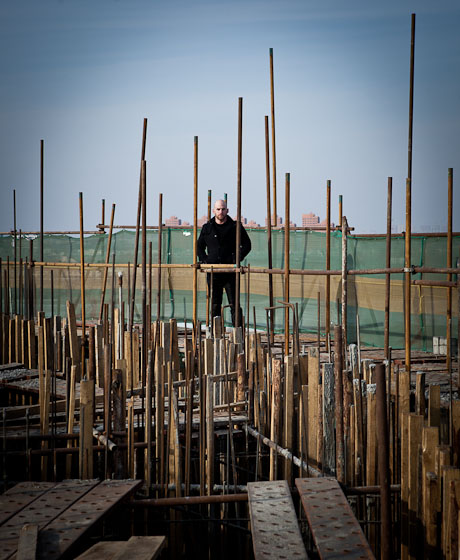


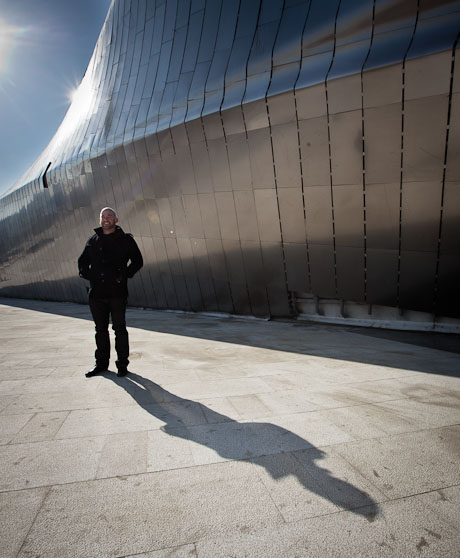
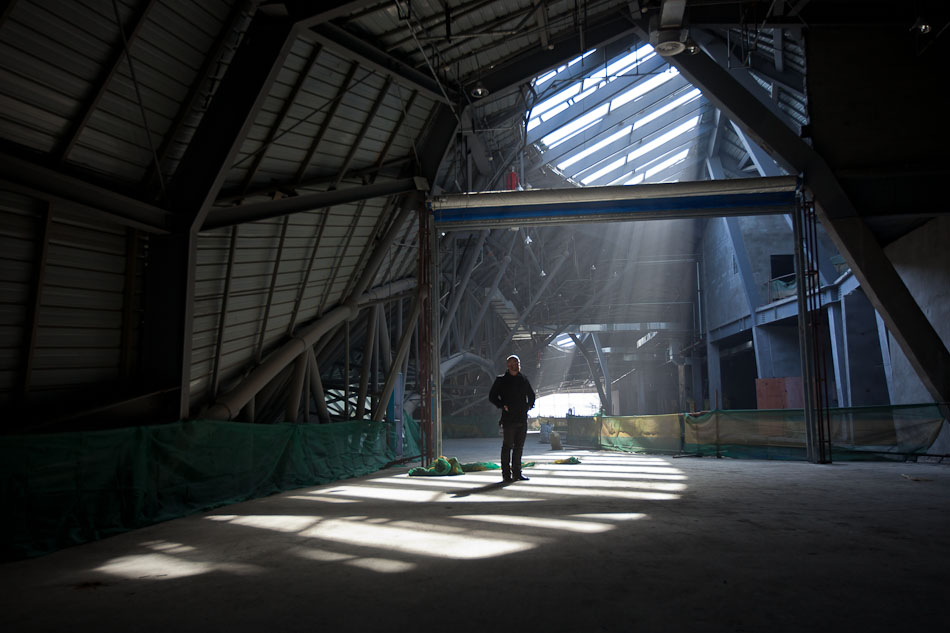
Mar 13, 2012 | Architecture, Clippings
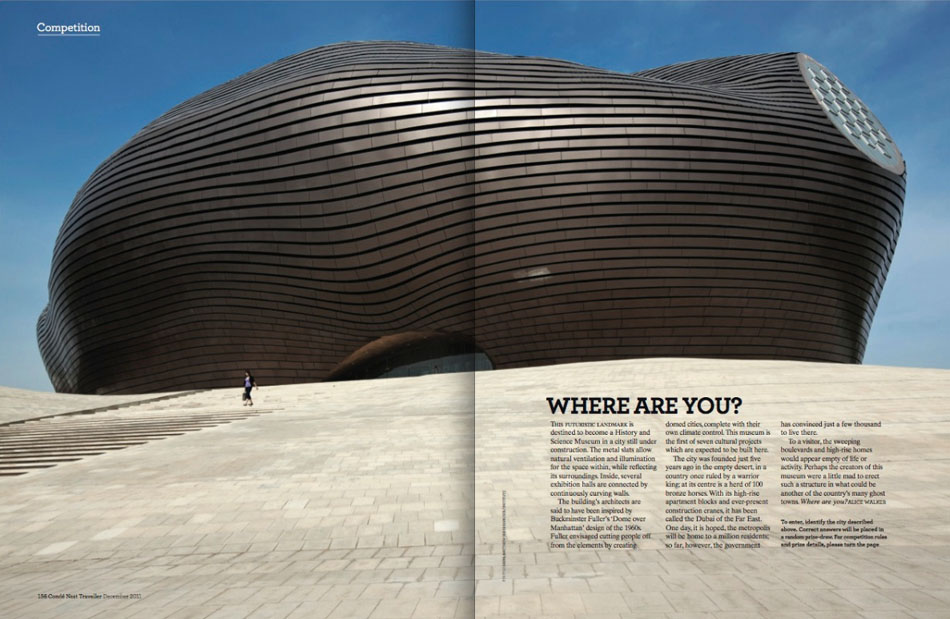
One of my photographs from the amazingly ridiculous Kangbashi district in Ordos was featured in Conde Nast Traveler this past month. The building shown is the Ordos Museum designed by MAD architects, one of the preeminent Chinese architecture firms founded by Ma Yansong who previously toiled as a project designer for Zaha Hadid Architects. The building itself remains a wonder to behold as its irregular shape clashes with the geometrical grid that binds the rest of the newfangled district. Whether or not it will see any use is the real question now that it finally opened. The municipal government can barely get people to stay put in the Kangbashi residential developments, let alone consistently fill up over 40,000 square meters of exhibition space. The flagship cultural center of Ordos will probably accumulate more sand from the Gobi desert than actual visitors. Anyway, I will be featuring more photographs of MAD buildings in the near future thanks to my first assignment with The New York Times Magazine. In the meantime, you can check out some extra photographs I took of the unfinished interior.
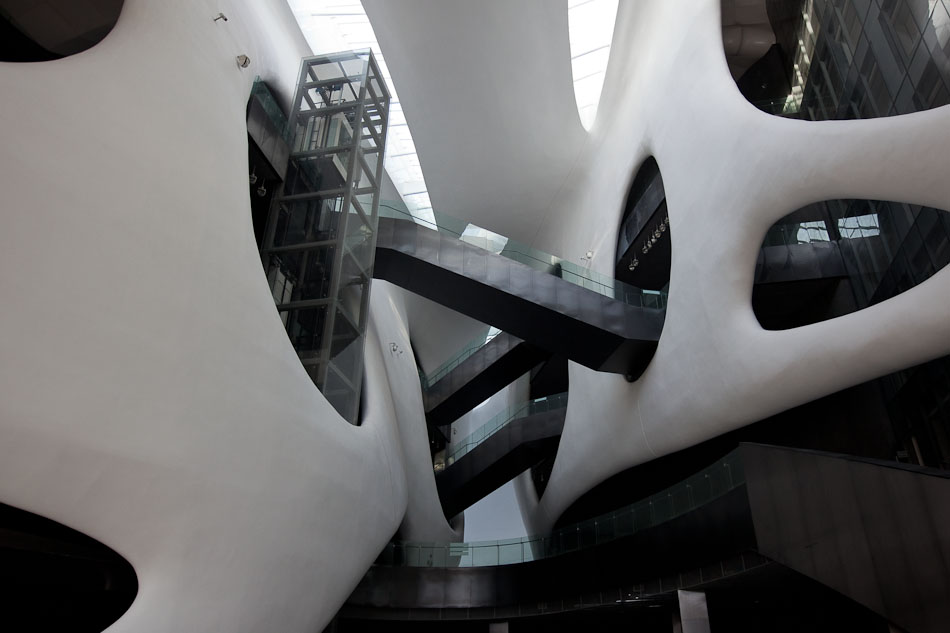
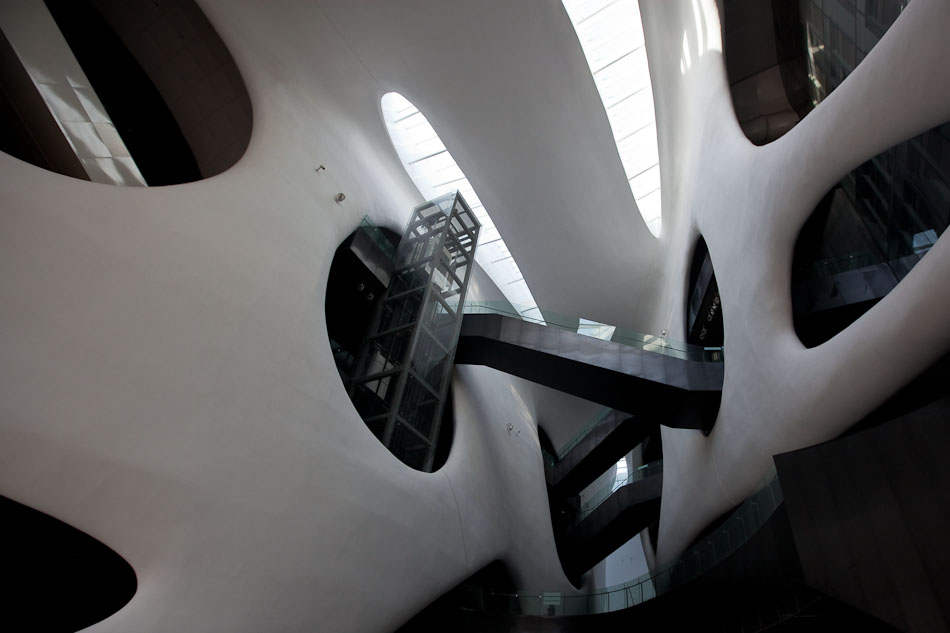
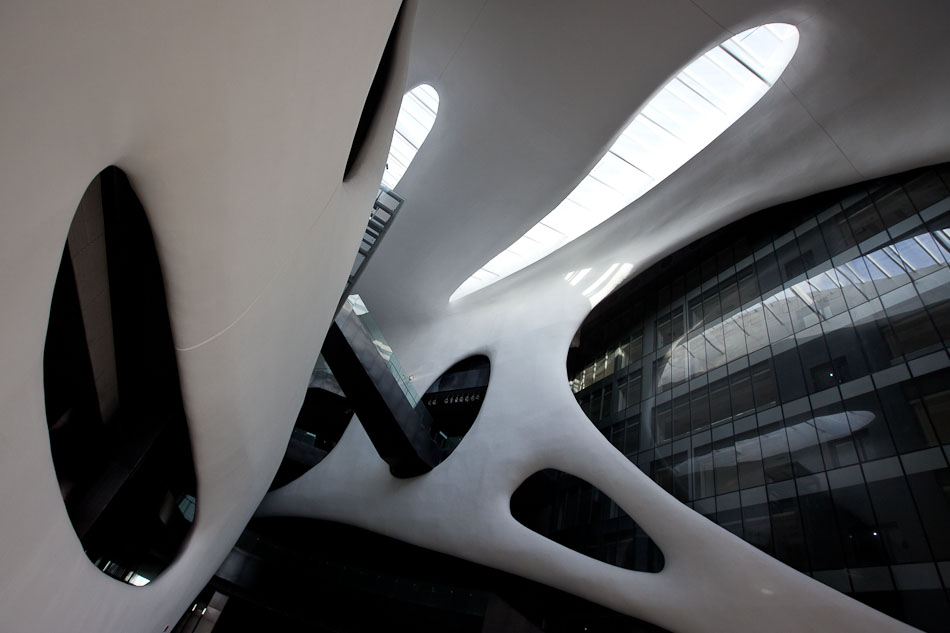
Sep 3, 2011 | Architecture, Counterfeit Paradises, Development
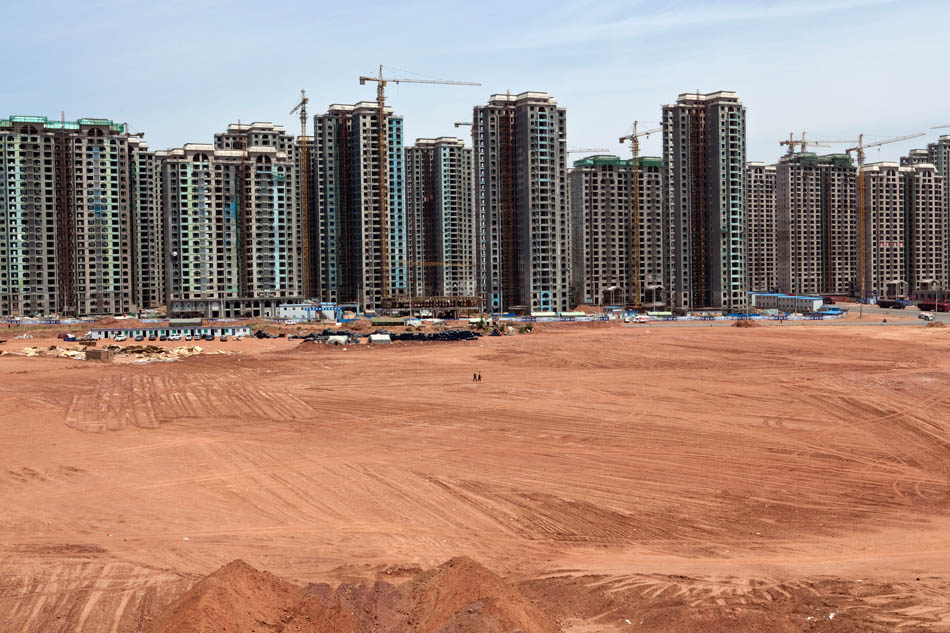
The arid landscape around Ordos was never a forgiving place. Its remoteness and lack of ground water always kept growth in check. Now the Inner Mongolian mining center produces a third of China’s coal and the municipal government decided to use the extra revenues to literally build an entire new city. Located 25 kilometers west of the old town, the Kangbashi/康巴什 new district sports a museum, opera house, library, cultural center, sculpture parks, malls and endless rows of megablock housing. Designed to accomodate a population upwards to a million people, only 30,000 have decided to make the move into the newfangled developments. For now the strange new city that popped out of the sands remains largely deserted. Only a handful of locals walk amidst the abstract shapes and glass-covered malls of Kangbashi. It is one of many locations in China that point to a real estate bubble just waiting to pop.


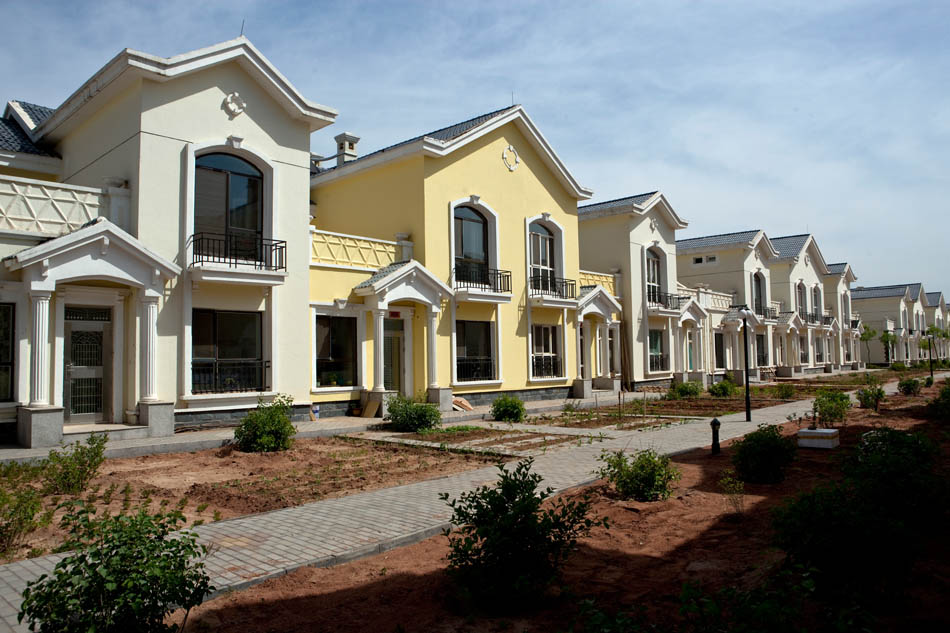

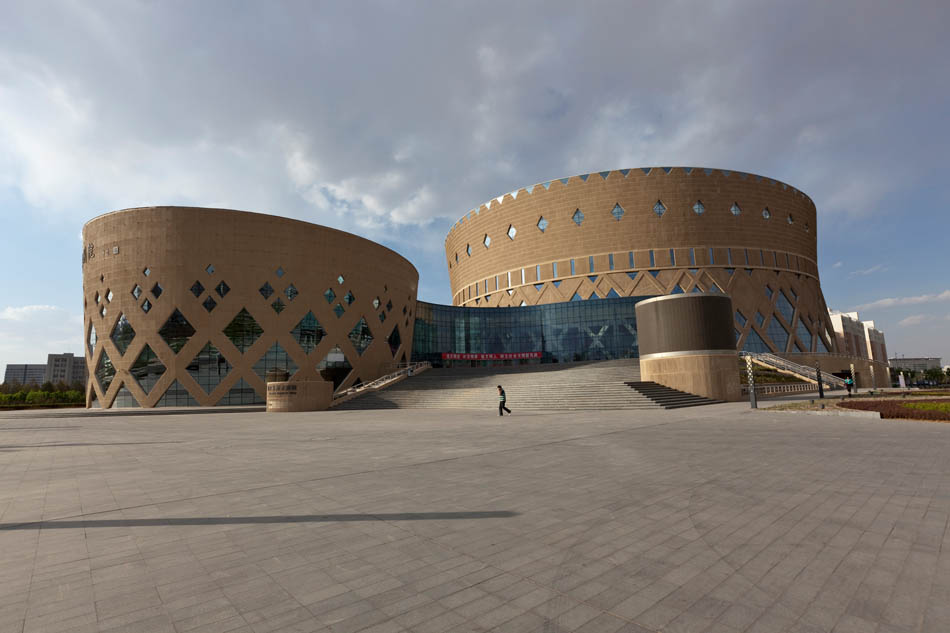


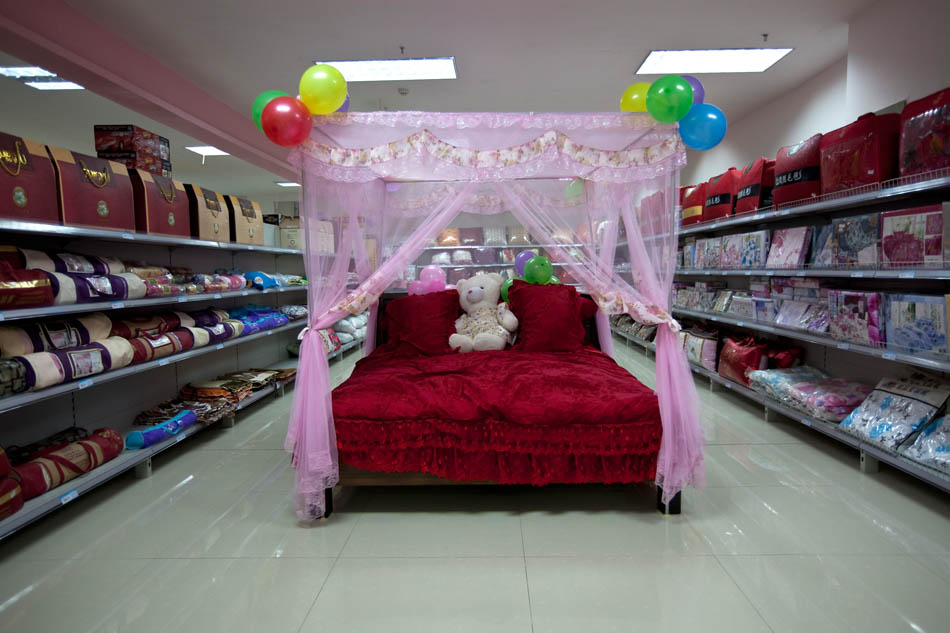
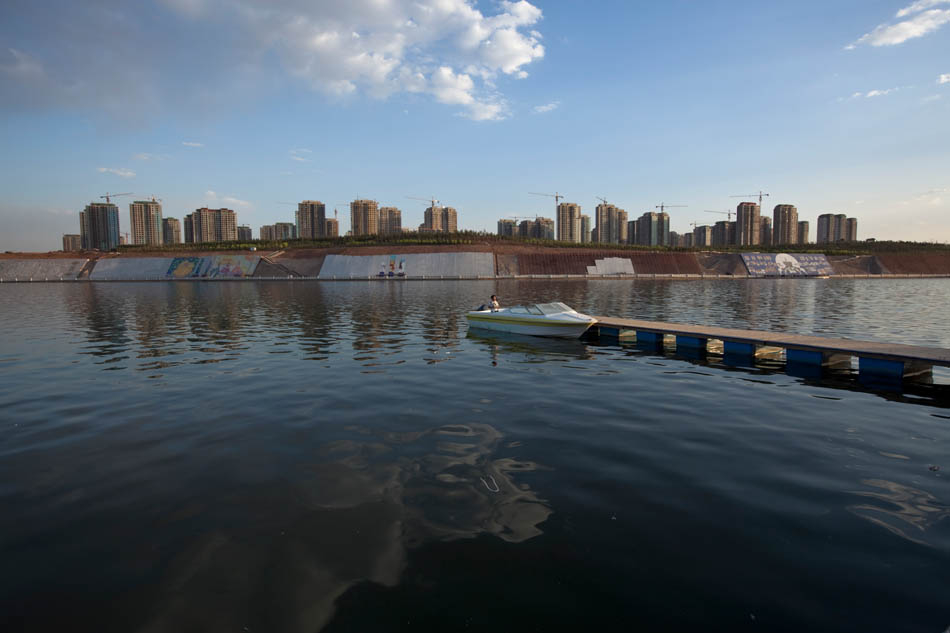
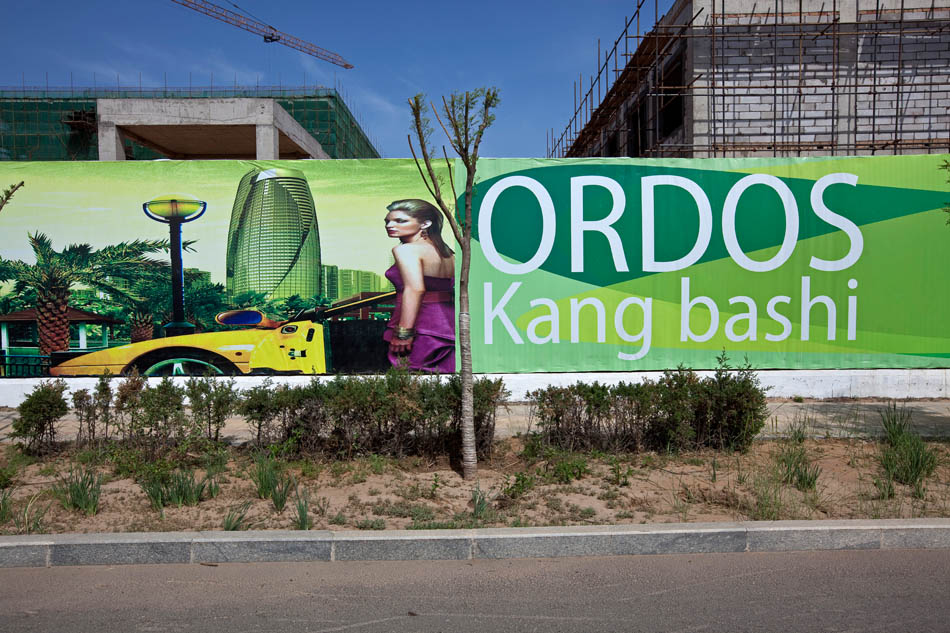
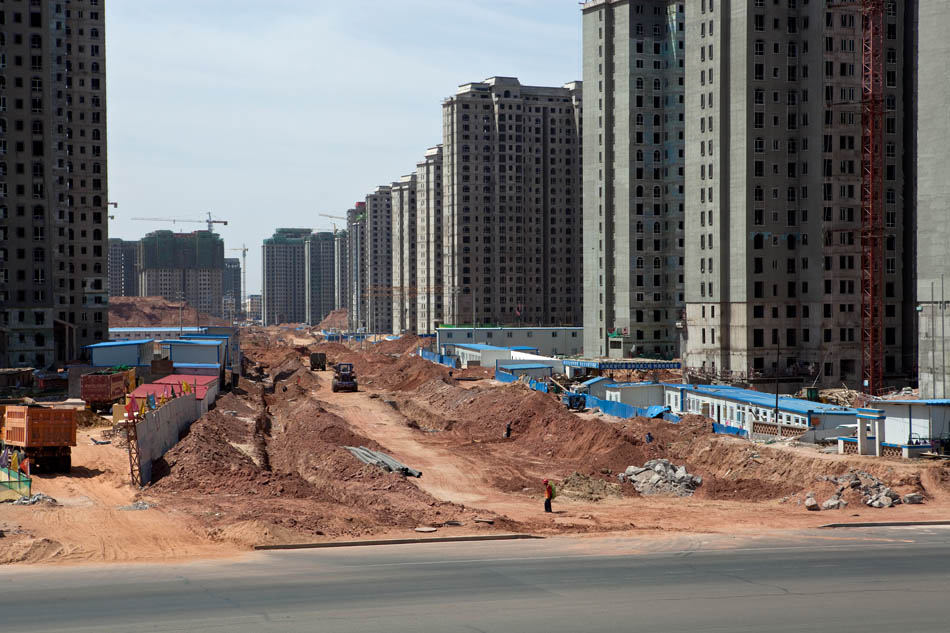
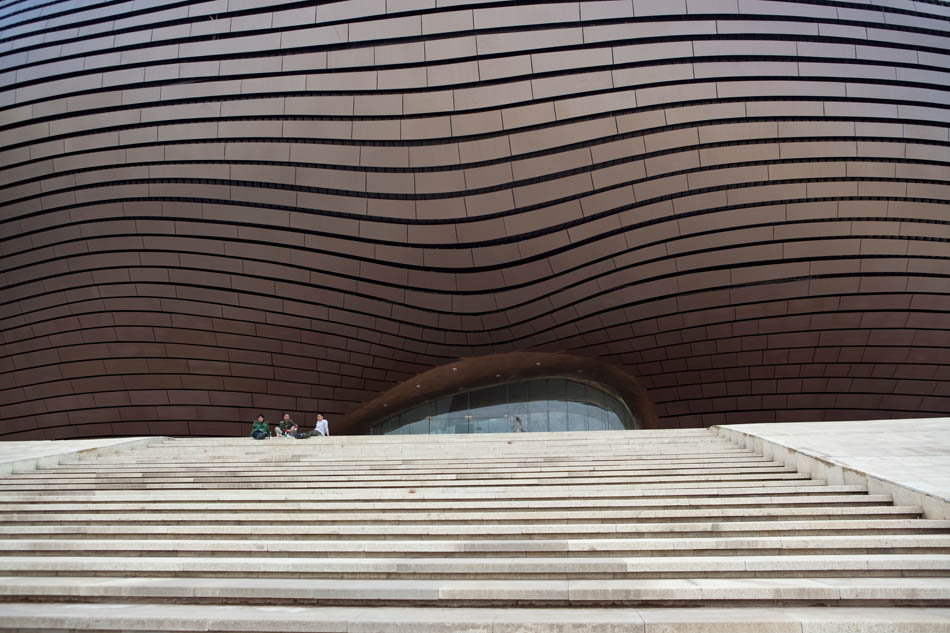
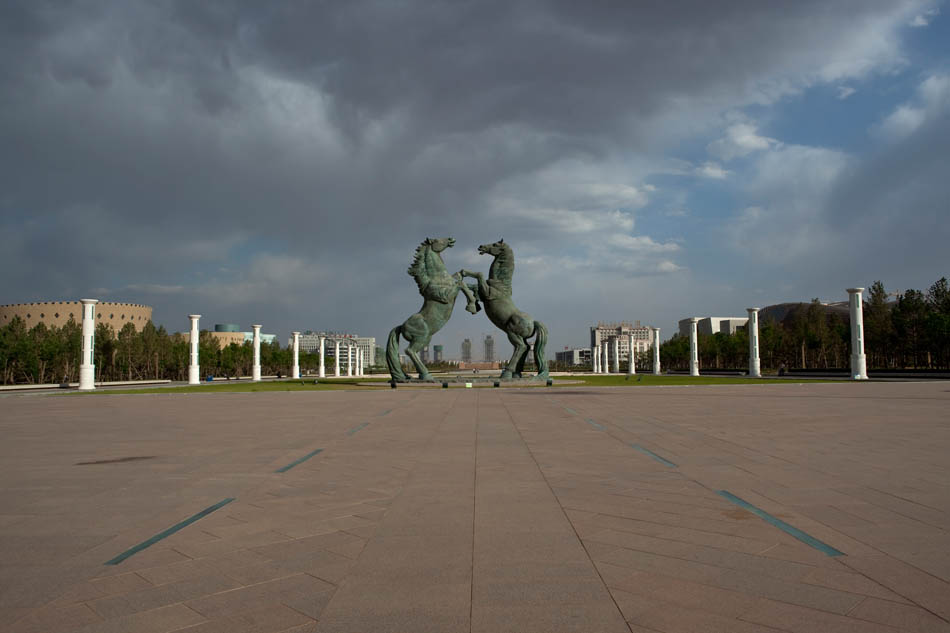

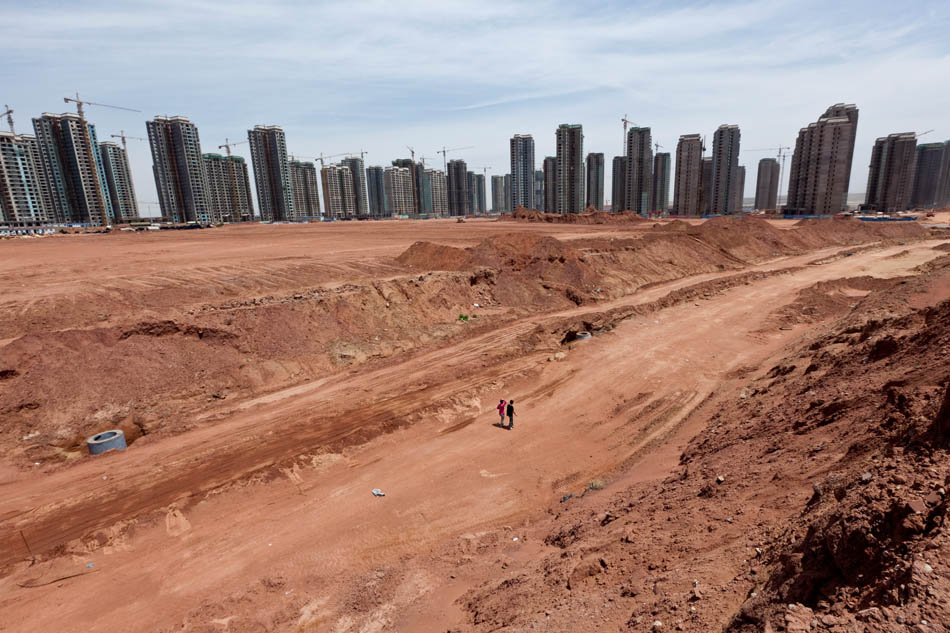

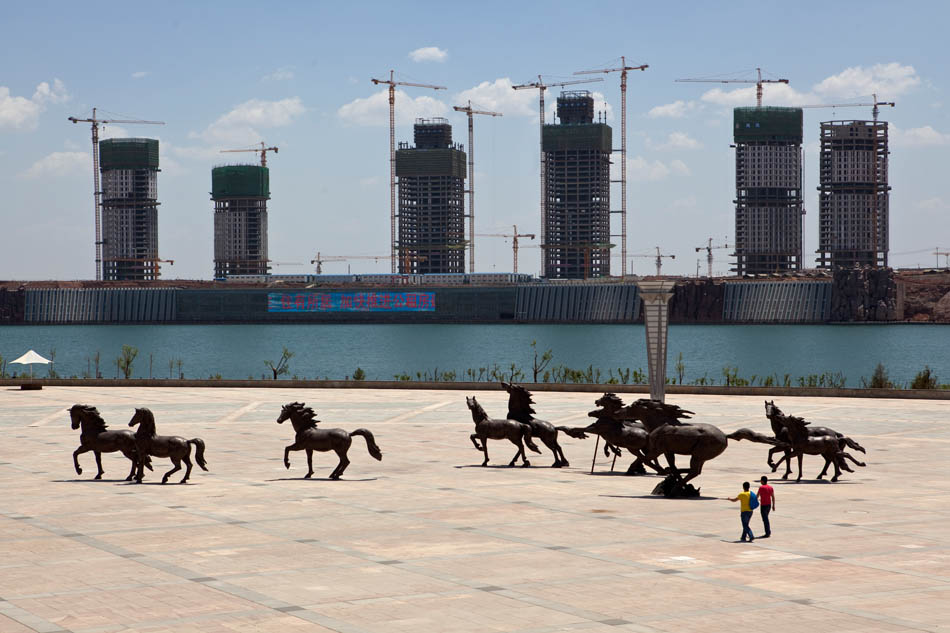
Apr 24, 2011 | Architecture, Clippings
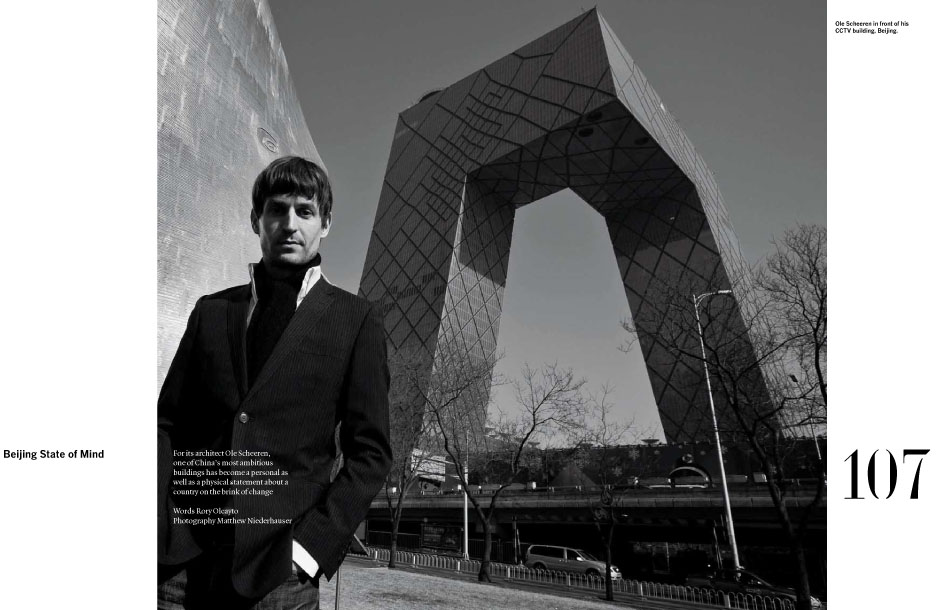
As many of you may know, I am a huge fan of the CCTV Tower in Beijing’s Central Business District. In my excitement that they finally turned on the lights in the soaring loop of a skyscraper, I scouted out locations and posted shots of it igniting the skyline. A few months later, as fortune would have it, I received an assignment to photograph Ole Scheeren, the former parter of Rem Koolhaas at OMA and mastermind behind the design and construction of the CCTV Tower. Basically I got to sneak around the new offices of Ole Scheeren in Jianwai Soho and then pose him in front of his awesome edifice. In the end, I used the same locations from the night shoot to photograph Ole Scheeren with the CCTV Tower. Unfortunately I was not allowed to photograph any models of his upcoming projects which were amazing. Ole himself was very affable during the shoot and is no stranger to the camera thanks to his high-profile, paparazzi-trailed relationship with actress Maggie Cheung. A looker and dresser, Ole made sure he was properly attired for the occasion and rocked a formidable Blue Steel. The clippings are from the article in the newly minted Port Magazine out of London.
